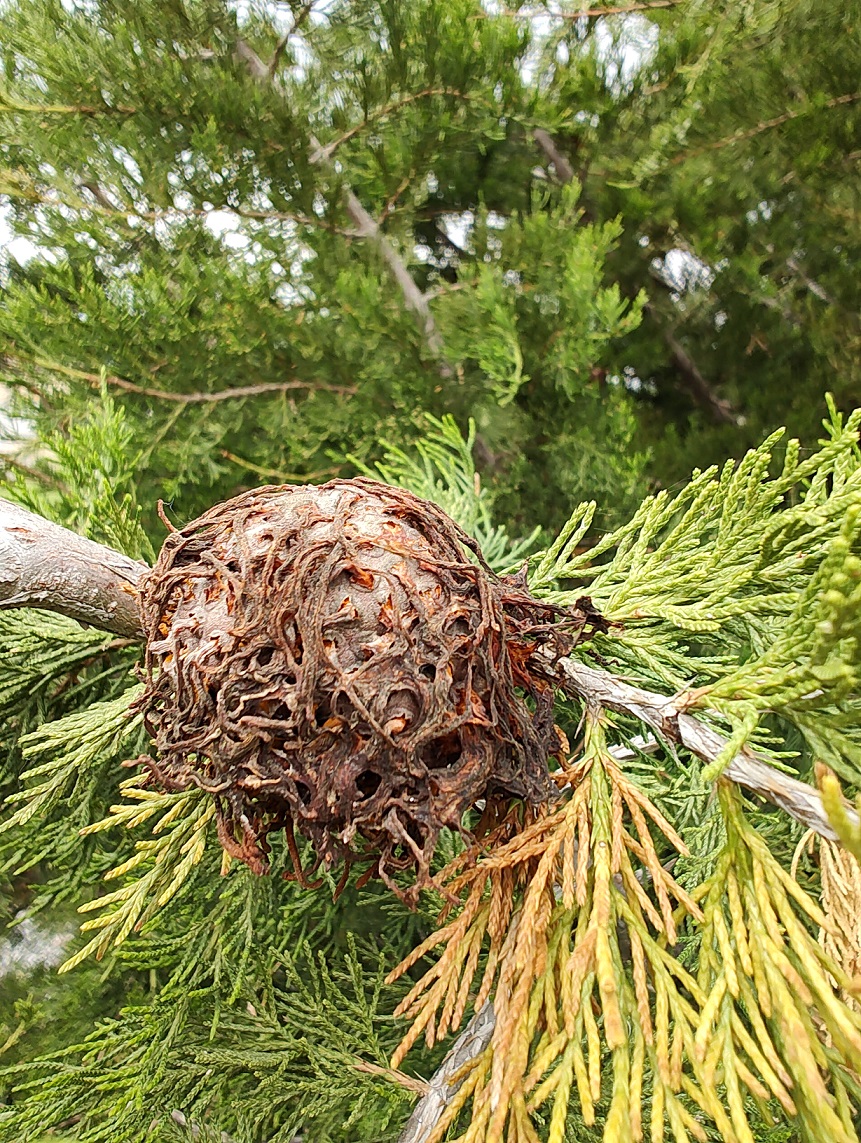1. First Apple Scab and Cedar Apple Rust Symptoms on Leaves Visible in Winchester on 16 May; 2. Primary Scab Season is Over on 10 May
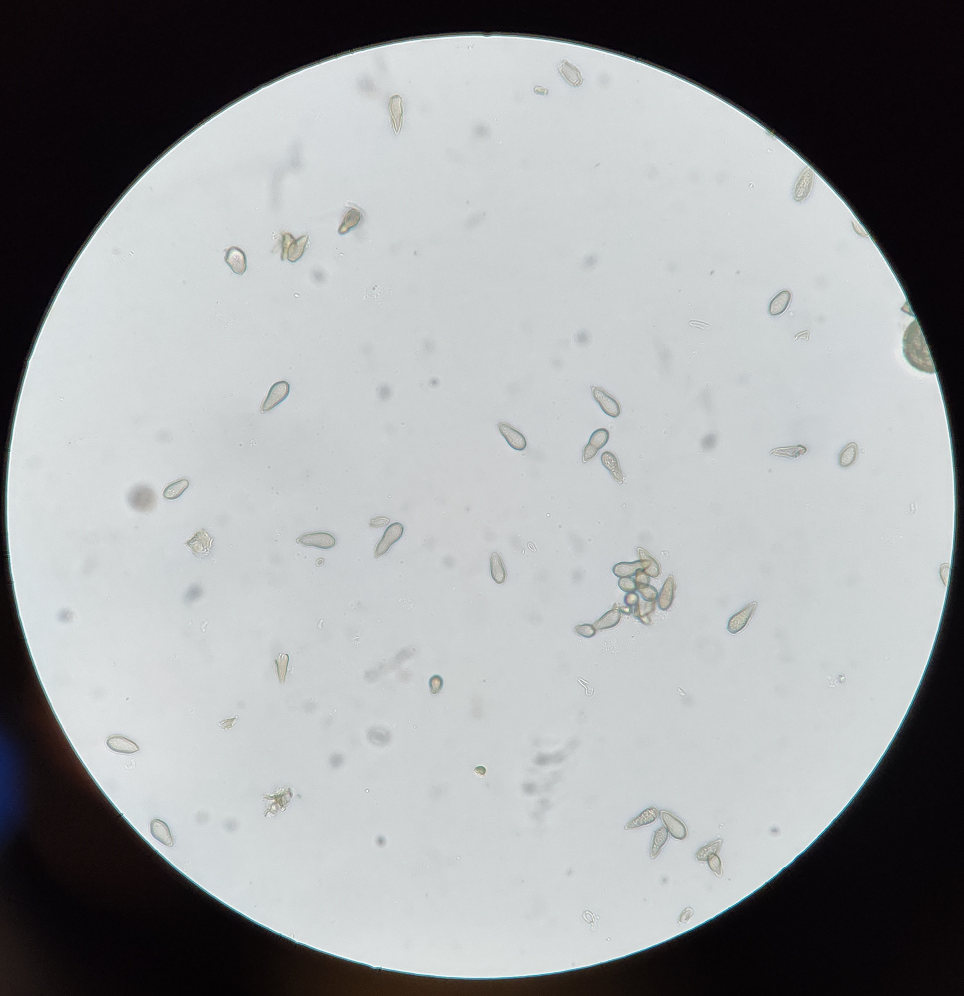
All the major apple fungal diseases in the Shenandoah Valley are visible in 2023 growing season: apple scab (Figs 1, 2), powdery mildew (previous post from 8 May), and rust (Fig. 4). On 16 May, I found first fresh scab infections on ‘Gala’ leaves (Fig. 1) at AREC. These symptoms were fond on apple blocks not protected by fungicides. When the scab lesions were examined with microscope, asexual spores of apple scab fungus called conidia were detected and will facilitate secondary infections (Fig 2). First dry and warm weather in the first half of spring and then cold and wet weather in the second half of spring 2023, has slowed down disease symptom occurrence. In terms of scab, we established two orchard blocks in March 2023 that have a high ascospore dose pressure here at AREC. We have secured this pressure by introducing infected leaf litter from the 2022 growing season. One of the first impressions when I saw scab visible as dark olive green spots (Fig. 1), was that infections were NOT on the apple spur leaves, which develop first in the season, but on the younger leaves developed mid-spring. This correlates well with the apple scab RIMpro model reporting that the first major infection of the season occurred on 15 April (Fig. 3).
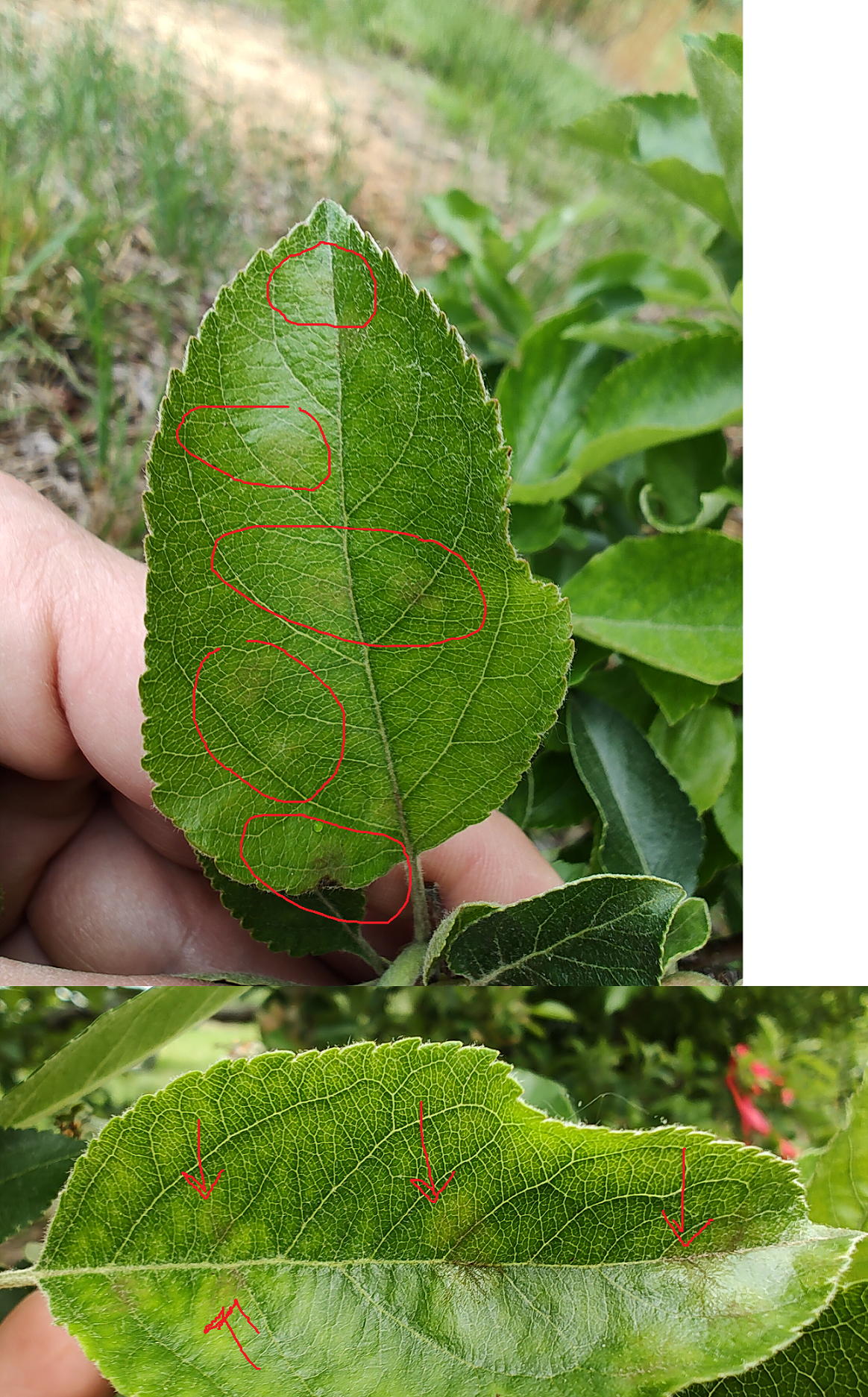

Based on RIMpro model, primary apple scab season has ended in Northern Virginia on 10 May. Regardless of the primary scab season end, the fungicide coverage needs to be continued on a tight spray interval up to 2 weeks after the date of primary scab season end (10 May 2023, for Winchester). This is absolutely needed because you do not know how good your coverage was in the major spring scab infection events and rust infections warrant continued applications ahead. Many of you are using alternate row middle (ARM) spraying that should cease at bloom and you should spray every row from bloom onward. So, if any scab lesions arise now from coverage issues associated with ARM spray approach, or due to missed fungicide applications before any rains during early spring, it will be much harder to have perfect looking fruit crop until harvest. Risks from scab are now high in orchards where scab lesions are visible on leaves or on fruit. This is because asexual spores of apple scab fungus called conidia are available for infection (Fig 2). In those orchards protection from scab scab continues with higher rates of captan as the secondary infections by asexual spores called conidia, which is what is inside of the scab lesions you see, and are now able to infect. If you see scab lesions let me know. Leaves are still expanding now on terminal shoots and can hold much more fungicide residues to protect from diseases, allowing some redistribution during low-amount rains.
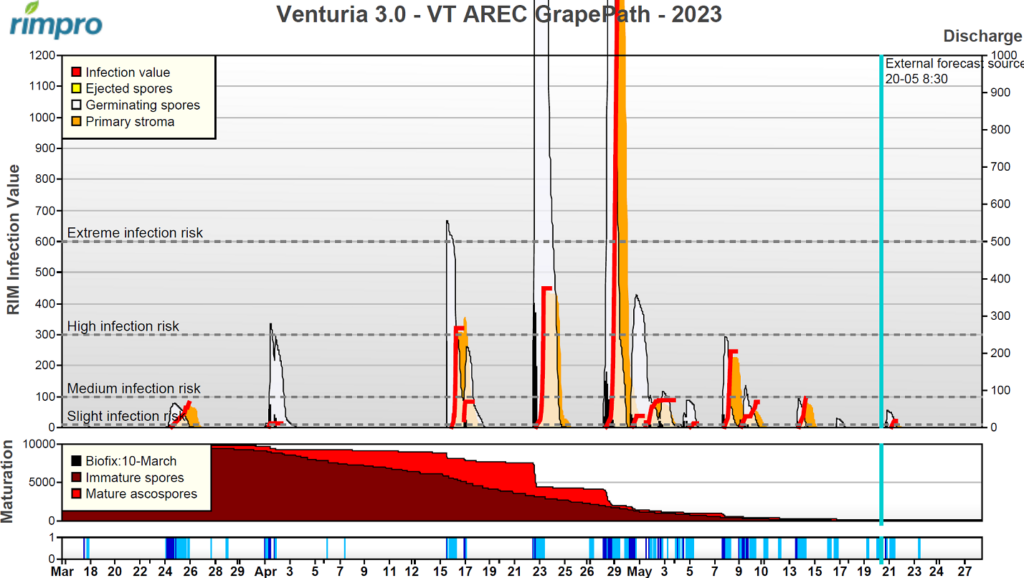
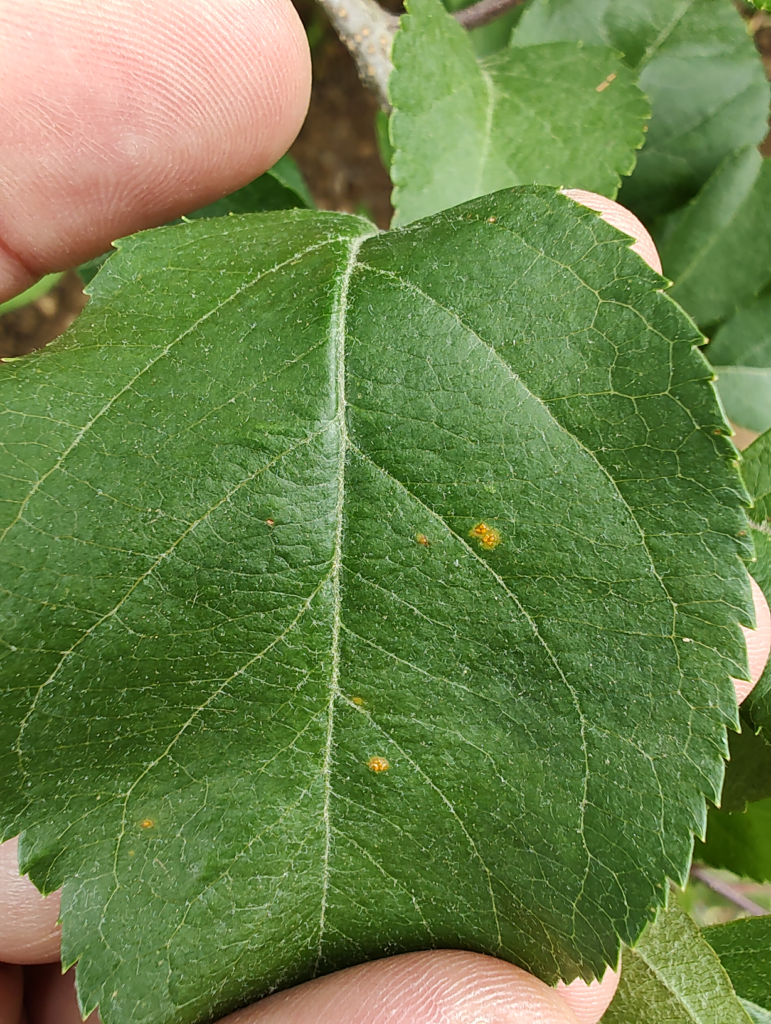
On 16 May, we also detected first cedar apple rust infections on ‘Fuji’ leaves (Fig. 2). Based on the look of the galls on Juniper trees (Fig. 5) it seems that the telial horns as source of basidiospores are depleted and no longer a threat for causing infections.
